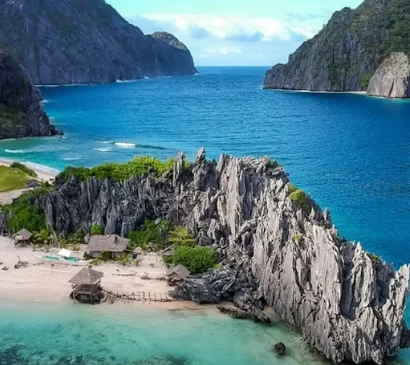Discover our capabilities and network
Overview of the Philippines
1. Geography
- Capital: Manila
- Area: Approximately 300,000 square kilometers (115,831 square miles).
- Islands: The Philippines consists of about 7,641 islands, divided into three main geographical regions: Luzon, Visayas, and Mindanao.
- Landscape: The country features diverse landscapes, including mountains, rainforests, rice terraces, and beautiful coastlines.
2. Political Structure
- The Philippines is a democratic republic.
- The President serves as both the head of state and the head of government.
- The legislative branch is bicameral, consisting of the Senate and the House of Representatives.
3. Economy
- The Philippine economy is classified as a newly industrialized country, with agriculture, manufacturing, mining, and services contributing to its GDP.
- Key industries include electronics, automotive, textiles, and tourism.
- The country is also known for its business process outsourcing (BPO) sector, which is a significant source of employment and foreign exchange.
4. Culture
- The Philippines has a rich and diverse cultural heritage influenced by various civilizations, including Spanish, American, and indigenous cultures.
- The official languages are Filipino (based on Tagalog) and English, with over 175 languages and dialects spoken across the country.
- Major festivals include Sinulog, Ati-Atihan, and Pahiyas, showcasing the vibrant traditions and customs of different regions.
5. Tourism
- The Philippines is famous for its beautiful beaches, crystal-clear waters, and vibrant marine life, making it a popular destination for diving and snorkeling.
- Notable tourist destinations include Boracay, Palawan (home to El Nido and Coron), Cebu, and Siargao.
- The country also offers a rich cultural experience, with historical sites, local cuisine, and traditional crafts.
6. Transportation
- The main international gateway is Ninoy Aquino International Airport (MNL) in Manila.
- Domestic flights connect various islands, while ferries and boats are commonly used for inter-island travel.
- Public transportation includes jeepneys, buses, tricycles, and taxis, with varying levels of availability in urban and rural areas.
7. Climate
- The Philippines has a tropical maritime climate, characterized by three main seasons: Tag-init (dry season), Tag-ulan (rainy season), and Tag-lamig (cool season).
- The dry season typically runs from November to April, while the rainy season occurs from May to October, with the possibility of typhoons.
8. Education and Healthcare
- The Philippines has a relatively high literacy rate, with education being compulsory for children up to the age of 12.
- The healthcare system includes both public and private facilities, with ongoing efforts to improve access and quality of care, especially in rural areas.
Conclusion
The Philippines is a beautiful and diverse country with a rich cultural heritage, stunning natural landscapes, and warm hospitality. It offers a wide range of experiences, from adventure and relaxation to cultural exploration. If you have specific questions or need more information about a particular aspect of the Philippines, feel free to ask!


